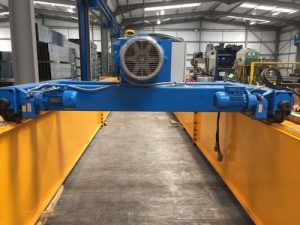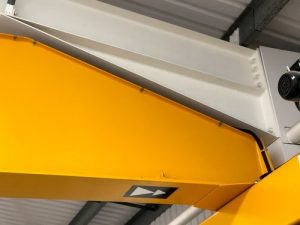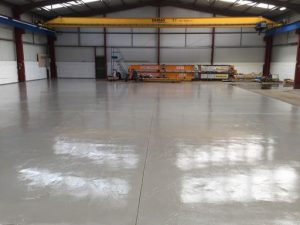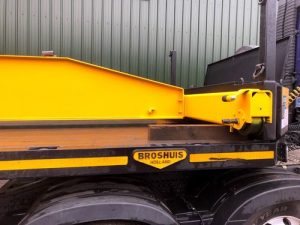10 Things To Know Before Buying Overhead Cranes.
10 Things To Know Before Buying An Overhead Crane – A number of customers often ask “how do we buy an overhead crane, or can you tell me about cranes?” You will not be the first to ask what may seem like a silly question, so we are here to offer the 10 things you need know before buying an Overhead Crane. Overhead cranes aren’t scary, honestly.
Overhead cranes are predominantly used inside factories and warehouses to pick and place heavy or awkward loads or goods. They are often called gantry cranes or electric overhead traveling cranes (EOTC’s or OTC’s), pick and place cranes, portal cranes or workshop cranes. Cranes are being used for smaller safe working loads (SWL’s), especially as production in industrial Britain gets lighter.
A SWL of 1t, or 500 kilos isn’t uncommon as health and safety regulations have become more stringent in the working world. We regularly sell pillar jib cranes with safe working as low as 1252kgs or 60 kilos. The most common size of industrial warehouse crane are 2t, 3.2t or 5t SWL, but they are regularly produced up to 10 tonnes, 20 tonnes, 30 tonnes or more for larger the UK’s heavy industries.
Smaller overhead cranes are usually single girder rather than double girder in design. What does single girder mean, and how can I tell? It is basically a single beam between the cranes end carriages at either side, that run on the crane rails. Single girder cranes are cheaper to manufacture than double girder cranes, and when the workshop roof is pitched in the middle they achieve better crane hook area coverage.
DG Cranes, Double Girder Cranes, or Twin Beam Cranes.
Double girder cranes, as the name suggests, have a pair of beams running across the factory with the hoist sat on top. Many people think a double girder crane has a better hook to floor lifting height than single beam cranes. However as the hoist sits on top the twin beams the rails need to be lower to avoid the hoist hitting the roof. The net lifting height is often the same.
In the picture below you can see on the left the single girder crane has the hoist below, but on the right the double girder crane has the blue hoist on the right.

overhead cranes

Crane Hook Height, Verses Crane Span.
Most workshops have a pitched roofs in the middle. See the pictures below. To gain extra height on a single girder crane, we can chamfer the cranes beam. We usually take away 40% of the beam and create an angled chamfer to match your roof’s pitch. This also allows us to give you greater hook height and more left and right travel than twin beam cranes if the roof purlin is likely to clash with the crane beams.



Much of what has been explained above may seem fairly standard, but from experience many crane customers may have never purchased a crane before. A gantry crane can easily last 20 to 30 years, so someone from the glass or CNC machining trade will know their trade inside out, but cranes may not be something they are too familiar with. Likewise we we wouldn’t know how to cut glass for a window for example. That is why we are here to help.
Buying an overhead crane; 10 things you need to consider, or know about.
- What is the maximum load capacity you will be lifting? This will allow us to gauge your safe working load (SWL)
- What duty is the crane? That is how often will it lift per day and how often will it lift to the cranes maximum SWL.
- What span is the crane, how wide to you want it?
- What hook height do you require your gantry crane to lift to?
- Do you require supporting steelwork to run the overhead crane’s carriages on?
- How far do you require the crane to travel, or the downshop run length?
- Do you wish to suspend the support steelwork from the building uprights via knee joints? Will the building take it the snow and wind loads plus the loading imposed on it by the crane and its movement?
- If free standing columns are required, what spacing or pitches do you require? 6 meter bays are the most common, but we can alter this.
- Do you require a radio remote control or pendant control?
- Do you require a new crane, a used crane? Also what type of hoist to you need; a chain or wire rope hoist?
We are here and happy to advise on the above, that’s our job. Never be daunted by crane terminology, call us today, or click on the online chat below right.
Other useful pages include;
How do I power an overhead crane?
Gantry Cranes: All you need to know
Overhead Travelling Cranes, or EOTC’s, FAQ’s
Lastly, visit our YouTube page.
